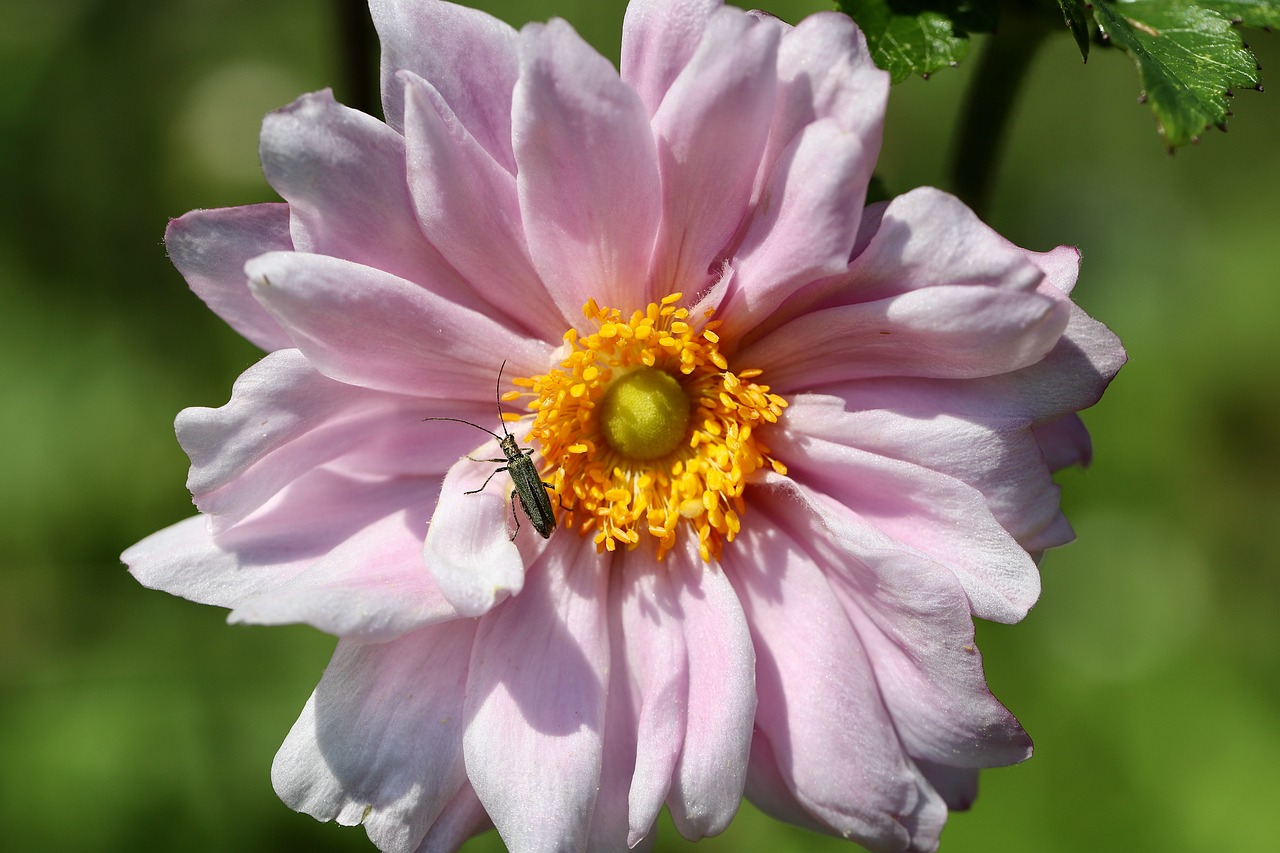
The Best Flowers for Your Happy Fall or Happy Winter
Are you looking for the perfect flowers to brighten up your fall or winter garden? Look no further! In this article, we will introduce you to the best flowers that will bring joy and color to your outdoor space during the colder months. From vibrant chrysanthemums to delicate pansies, these blooms will add a burst of beauty to your garden and create a happy and welcoming atmosphere.
Chrysanthemums are one of the top flowers for fall gardens. These stunning blooms come in various colors and shapes, allowing you to create a vibrant and eye-catching display. Whether you prefer bold and bright hues or soft and pastel tones, there is a chrysanthemum variety that will suit your taste. Plus, these flowers thrive in cooler temperatures, making them perfect for the fall season.
Pansies, on the other hand, are the ideal flowers for your winter garden. With their wide range of colors and ability to withstand cold temperatures, pansies will bring life and cheer to your outdoor space even in the coldest months. These cheerful blooms are like little bursts of sunshine on a chilly day, and they will definitely put a smile on your face.
So, whether you’re looking to add some vibrant colors to your fall garden or bring life to your winter landscape, chrysanthemums and pansies are the best flowers to choose. Their beauty and resilience will make your garden a happy place to be, even during the colder months.
Chrysanthemums
Chrysanthemums are a popular choice for fall gardens due to their ability to thrive in cooler temperatures. These stunning flowers come in a wide variety of colors and shapes, adding a burst of beauty to your outdoor space. Whether you prefer vibrant reds and oranges or soft pinks and purples, there is a chrysanthemum variety to suit every taste.
When caring for chrysanthemums, it’s important to provide them with the right conditions. They prefer well-draining soil and should be watered regularly, especially during dry spells. Deadheading spent blooms will encourage new growth and prolong the flowering season. Additionally, chrysanthemums benefit from regular fertilization to promote healthy growth.
If you’re looking to add a touch of elegance to your fall garden, consider planting chrysanthemums. Their vibrant colors and beautiful shapes will create a stunning display that will brighten up your outdoor space throughout the season.
Pansies
When it comes to choosing the perfect flowers for your winter garden, pansies are an excellent choice. These vibrant blooms not only add a pop of color to your outdoor space but also have the ability to withstand cold temperatures, making them a resilient option for the coldest months of the year.
One of the reasons why pansies are so popular for winter gardens is their wide range of colors. From deep purples and blues to bright yellows and oranges, there is a pansy to suit every taste and style. Whether you prefer a monochromatic look or want to create a colorful mosaic, pansies offer endless possibilities for adding visual interest to your garden.
Furthermore, pansies are known for their ability to thrive in cooler temperatures. While many other flowers struggle to survive in the cold, pansies continue to bloom and bring life to your outdoor space. Their hardiness makes them a reliable choice for winter gardens, ensuring that you can enjoy their cheerful presence even when the weather is at its coldest.
In addition to their resilience, pansies are also easy to care for. They require minimal maintenance and can tolerate a range of soil conditions. Whether you have a sunny or shady spot in your garden, pansies can adapt and thrive, making them a versatile choice for any garden setting.
So, if you’re looking to brighten up your winter garden, consider planting pansies. With their wide range of colors, ability to withstand cold temperatures, and easy care requirements, these cheerful blooms are sure to bring life and beauty to your outdoor space even in the coldest months.
Winter Jasmine
Winter jasmine is a beautiful flowering plant that brings joy and fragrance to your garden during the winter months. This vine-like plant produces delicate yellow flowers that brighten up the colder seasons. If you want to cultivate and care for winter jasmine, there are a few important things to keep in mind.
Cultivating Winter Jasmine:
- Choose a location: Winter jasmine thrives in full sun or partial shade. Select a spot in your garden that receives at least a few hours of direct sunlight each day.
- Prepare the soil: Ensure that the soil is well-draining and rich in organic matter. If the soil is heavy or clay-like, consider adding compost or sand to improve drainage.
- Planting: Dig a hole that is slightly larger than the root ball of the winter jasmine plant. Place the plant in the hole and backfill with soil, gently firming it around the base of the plant.
- Watering: Water the newly planted winter jasmine thoroughly and keep the soil moist but not waterlogged. During dry spells, provide additional water to prevent the plant from drying out.
Caring for Winter Jasmine:
- Pruning: Winter jasmine benefits from regular pruning to maintain its shape and promote healthy growth. Prune the plant in late winter or early spring before new growth begins.
- Fertilizing: Apply a balanced fertilizer in early spring to provide nutrients for the winter jasmine plant. Follow the package instructions for the appropriate amount to use.
- Protecting from frost: If you live in an area with harsh winters, consider protecting your winter jasmine plant from frost by covering it with a layer of mulch or burlap.
By following these cultivation and care tips, you can enjoy the beauty and fragrance of winter jasmine in your garden. Its delicate yellow flowers will bring a touch of warmth and color to the colder seasons, making your outdoor space even more inviting.
Hellebores
Step into the enchanting world of hellebores, also known as Christmas roses. These beautiful flowers are evergreen perennials that bring elegance and charm to your winter garden. With their delicate blooms in shades of white, pink, and purple, hellebores create a stunning display that will brighten up your outdoor space during the colder months.
Hellebores are known for their ability to withstand harsh winter conditions, making them a reliable choice for your garden. These hardy plants can tolerate frost and even bloom in the snow, adding a touch of magic to your winter landscape. Their long-lasting flowers provide a welcome burst of color when other plants are dormant, making them a standout feature in your garden.
If you’re looking to add hellebores to your garden, there are several varieties to choose from. The most common types include Helleborus niger, Helleborus orientalis, and Helleborus foetidus. Each variety offers its own unique characteristics and color variations, allowing you to create a diverse and captivating display.
To care for hellebores, provide them with well-drained soil and partial shade. These plants prefer moist but not soggy conditions, so be sure to water them regularly. Mulching around the base of the plants can help retain moisture and protect the roots during colder temperatures.
Hellebores are also relatively low-maintenance plants, requiring minimal pruning or deadheading. Their evergreen foliage adds interest to your garden year-round, even when the flowers have faded. With their stunning blooms and easy care requirements, hellebores are a must-have addition to any winter garden.
Winter Aconite
Winter aconite is a delightful little flower that brings a burst of vibrant yellow to your garden during the late winter months. Despite its small size, it adds a cheerful and colorful touch to your winter landscape. These flowers are known for their unique characteristics, making them a popular choice for winter gardens.
Winter aconite blooms in late winter, when other flowers are still dormant. Its bright yellow petals stand out against the cold, gray backdrop of winter, creating a stunning visual display. These flowers are also known for their ability to tolerate cold temperatures, making them a hardy addition to your garden.
To incorporate winter aconite into your garden, you can plant them in clusters or drifts. They look beautiful when planted alongside other winter-blooming flowers, such as snowdrops or hellebores. You can also create a colorful winter landscape by combining winter aconite with other vibrant flowers, like pansies or violas.
When planting winter aconite, make sure to choose a location that receives partial shade or dappled sunlight. These flowers prefer moist, well-drained soil. Plant the bulbs in the fall, about 2-3 inches deep and 2-3 inches apart. Once planted, water them thoroughly and provide a layer of mulch to protect them from harsh winter conditions.
As winter aconite blooms early in the year, it provides a much-needed burst of color and joy to your garden during the colder months. Its unique characteristics and vibrant yellow flowers make it a standout choice for creating a cheerful and colorful winter landscape.
Ornamental Cabbages
Discover how ornamental cabbages can add a touch of whimsy and beauty to your fall or winter garden. These unique plants feature colorful leaves that resemble roses and can withstand colder temperatures.
Ornamental cabbages, also known as flowering kale, are a popular choice for adding visual interest to gardens during the colder months. These plants are known for their vibrant and eye-catching foliage, which comes in a variety of colors including shades of pink, purple, white, and green. The leaves of ornamental cabbages have a unique texture and shape, resembling the petals of a rose. This makes them a stunning addition to any garden, adding a touch of elegance and charm.
One of the great advantages of ornamental cabbages is their ability to withstand colder temperatures. Unlike traditional cabbages, which are typically grown for their edible leaves, ornamental cabbages are grown for their ornamental value. They are bred to be more cold-tolerant, making them an ideal choice for fall and winter gardens. These hardy plants can withstand frost and even snow, ensuring that your garden remains vibrant and colorful even in the coldest months.
If you’re looking to incorporate ornamental cabbages into your garden, they can be planted in both containers and flower beds. They are versatile and can be used as standalone plants or mixed with other cold-tolerant flowers and foliage. Consider creating a stunning display by combining ornamental cabbages with other winter-flowering plants such as pansies or winter jasmine.
To care for ornamental cabbages, provide them with well-drained soil and ample sunlight. They prefer cool temperatures and can tolerate some shade, but they will produce the best foliage color in full sun. Water the plants regularly, making sure the soil is moist but not waterlogged. Remove any damaged or discolored leaves to keep the plants looking their best.
In conclusion, ornamental cabbages are a fantastic addition to any fall or winter garden. Their unique appearance and ability to withstand colder temperatures make them a standout choice for adding beauty and whimsy to your outdoor space. Whether you plant them in containers or flower beds, these colorful plants will surely brighten up your garden during the colder months.
Winterberry
Winterberry is a stunning deciduous holly shrub that is renowned for its vibrant red berries. This native plant adds a pop of color to your winter garden, creating a striking display that is sure to catch the eye. Cultivating and caring for winterberry is relatively easy, making it a popular choice for both experienced and novice gardeners.
When it comes to cultivating winterberry, it is important to choose a suitable location. This shrub thrives in moist, acidic soil and prefers full sun or partial shade. It is also important to ensure proper spacing between plants to allow for adequate air circulation.
Winterberry is dioecious, meaning that both male and female plants are required for berry production. To ensure a bountiful display of berries, it is recommended to plant at least one male plant for every five female plants. The male plants do not produce berries but are essential for pollination.
During the winter months, the vibrant red berries of winterberry are a sight to behold. They provide a much-needed burst of color in an otherwise dreary landscape. These berries are also a valuable food source for birds, attracting them to your garden and adding to its biodiversity.
When it comes to caring for winterberry, regular watering is important, especially during dry periods. Mulching around the base of the plant can help retain moisture and suppress weeds. Pruning is generally not necessary, but if desired, it can be done in late winter or early spring to shape the shrub.
In conclusion, winterberry is a beautiful shrub that adds a vibrant touch to your winter garden. By following the proper cultivation and care techniques, you can enjoy its striking display of red berries during the colder months. So, why not consider adding winterberry to your garden and create a stunning winter landscape?
Camellias
Camellias are elegant evergreen shrubs that bring beauty to your garden during the winter months. These stunning flowers come in a variety of colors and varieties, making them a popular choice for winter blooms. There are three main types of camellias: japonica, sasanqua, and reticulata. Each type has its own unique characteristics and care requirements.
The japonica camellia is known for its large, showy flowers that come in a range of colors, including white, pink, and red. They prefer partial shade and well-drained soil. Sasanqua camellias, on the other hand, have smaller flowers and are more tolerant of sun and heat. They are great for adding color to your garden during the fall and early winter. Reticulata camellias have the largest flowers of all camellia varieties and are often used as focal points in the garden.
To care for camellias, it’s important to provide them with the right growing conditions. They prefer acidic soil and should be planted in a location that receives morning sun and afternoon shade. Camellias also require regular watering, especially during dry periods. Pruning is necessary to maintain their shape and promote healthy growth. It’s best to prune camellias after they have finished blooming.
To create a stunning display of camellias in your garden, consider planting them in groups or clusters. This will create a dramatic effect and showcase their beauty. You can also mix different varieties and colors to add visual interest. Camellias can be planted in containers or in the ground, depending on your preference and available space.
Overall, camellias are a wonderful addition to any winter garden. Their elegant blooms and evergreen foliage provide year-round beauty and color. By choosing the right varieties and providing proper care, you can create a stunning display of camellias that will impress and delight.
Violas
Violas are a popular choice for winter gardens due to their charming appearance and ability to withstand cold temperatures. These delightful flowers come in a variety of colors, ranging from vibrant purples and pinks to soft whites and yellows. Their small size and delicate petals make them a perfect addition to your fall or winter landscape.
One of the reasons violas are so beloved is their resilience in colder weather. Unlike many other flowers, violas can tolerate frost and even bloom in temperatures as low as 25 degrees Fahrenheit (-4 degrees Celsius). This makes them an excellent choice for adding color and beauty to your garden during the colder months.
In addition to their cold tolerance, violas are also known for their long-lasting blooms. These flowers can continue to bloom for several months, providing a continuous display of color throughout the winter season. Whether planted in containers or in the ground, violas will bring a touch of cheer to your outdoor space.
Frequently Asked Questions
- Q: What are the best flowers for a fall or winter garden?
A: The best flowers for a fall or winter garden include chrysanthemums, pansies, winter jasmine, hellebores, winter aconite, ornamental cabbages, winterberry, camellias, and violas. These flowers are known for their ability to thrive in cooler temperatures and bring color and beauty to your outdoor space during the colder months.
- Q: How do I care for chrysanthemums?
A: Chrysanthemums require well-drained soil and regular watering. They should be planted in an area with full sun exposure. Deadheading the spent flowers and providing occasional fertilizer can help promote continuous blooming throughout the fall season.
- Q: Can pansies survive in cold temperatures?
A: Yes, pansies are known for their ability to withstand cold temperatures. They can survive light frosts and even bloom during the winter months. However, it is important to provide them with well-drained soil and protect them from extreme cold and heavy snowfall.
- Q: How do I cultivate and care for winter jasmine?
A: Winter jasmine is a vine-like plant that blooms during the winter months. It prefers well-drained soil and full sun or partial shade. Regular pruning is necessary to maintain its shape and promote healthy growth. It is a low-maintenance plant that adds beauty and fragrance to your winter garden.
- Q: What are the characteristics of hellebores?
A: Hellebores, also known as Christmas roses, are evergreen perennials that produce elegant blooms in shades of white, pink, and purple. They are known for their ability to bloom during the winter months and can tolerate shade. Hellebores add a touch of enchantment to any winter garden.
- Q: How can I incorporate winter aconite into my garden?
A: Winter aconite is a small but vibrant yellow flower that blooms in late winter. It can be planted in drifts or clumps to create a cheerful and colorful winter landscape. Winter aconite prefers well-drained soil and partial shade. It is a resilient flower that can withstand colder temperatures.
- Q: What are ornamental cabbages?
A: Ornamental cabbages are unique plants that feature colorful leaves resembling roses. They can add a touch of whimsy and beauty to your fall or winter garden. These plants are known for their ability to withstand colder temperatures and can be grown in containers or flower beds.
- Q: How do I cultivate and care for winterberry?
A: Winterberry is a deciduous holly shrub known for its vibrant red berries during the winter months. It requires a male and female plant for cross-pollination to produce berries. Winterberry prefers moist, acidic soil and full sun or partial shade. Pruning is necessary to maintain its shape and encourage berry production.
- Q: What are the care requirements for camellias?
A: Camellias are evergreen shrubs that bloom during the winter months. They prefer well-drained, acidic soil and partial shade. Regular watering, mulching, and occasional fertilization can help promote healthy growth and abundant flowering. Pruning is also necessary to maintain their shape and remove dead or diseased branches.
- Q: Why are violas popular for winter gardens?
A: Violas are popular for winter gardens because they come in a variety of colors and can withstand cold temperatures. These charming flowers add a delightful touch to your fall or winter landscape. They can be planted in containers, flower beds, or used as edging plants.



